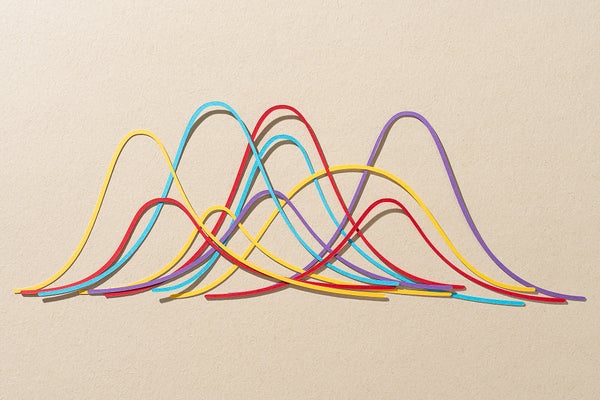Hannah Larson is obsessed with understanding what happens when two or more mathematical objects intersect. Larson, a mathematician at the University of California, Berkeley, and a research fellow at the Clay Mathematics Institute, recently won a 2024 Maryam Mirzakhani New Frontiers Prize. It’s named after the first female mathematician to win the Fields Medal, often described as the Nobel Prize of math. The New Frontiers Prize is given to exceptional female mathematicians who have recently earned their Ph.Ds.
Intersection theory, one of Larson’s specialties, is a branch of a field called algebraic geometry. Intersection theory can be used to probe relatively simple questions about, say, how two lines intersect, but it’s also a powerful way to understand what happens in more challenging situations involving objects in greater numbers or ones that are more complicated to study.
While Larson was an undergraduate student at Harvard University, she became captivated by the mathematics she was learning in an intersection theory class. “I thought that course was so amazing, and the things you could calculate using intersection theory were so cool,” Larson says.
On supporting science journalism
If you're enjoying this article, consider supporting our award-winning journalism by subscribing. By purchasing a subscription you are helping to ensure the future of impactful stories about the discoveries and ideas shaping our world today.
Larson, who is still early in her career, has been recognized for her boundary-pushing work on multiple lines of mathematical inquiry. She spoke to Scientific American about her recent win and some of the mathematical tools, objects and ideas that are key players in her research.
[An edited transcript of the interview follows.]
How would you describe intersection theory?
At the most basic level, it’s about understanding what happens when you intersect things. But in algebraic geometry, I would say intersection theory is especially interesting when we work with moduli spaces.
What are moduli spaces?
A moduli space is a space where each point corresponds to an object of some type that we’re interested in. One of the motivating ideas is that mathematical objects are a little bit like people: we understand them better when we study them in families together with objects of the same type. The moduli space helps us do that because the points of the moduli space keep track of all the different objects of a certain type.
Furthermore, if I trace out a path within the moduli space, that corresponds to a continuously varying family of our objects. What that means is a little difficult to make precise, but we can take this example: the moduli space of circles. Every circle is determined by its center, (a, b), and its radius, r. So the moduli space of circles is a three-dimensional space of triples, (a, b, r), where r is greater than zero. If I trace out a continuous path in the moduli space, you can imagine a movie of a circle that is rolling around and increasing and decreasing in size. But it’s never going to go from [one spot] and just jump way over [to another] because [that] would not be continuous.
How does this relate to intersection theory?
If you’re interested in certain subsets of a moduli space, those will tend to correspond to objects that have a certain property. So when you intersect two subsets in the moduli space, you’re trying to understand what objects have both of those properties. That, at its core, is what intersection theory is about.
What are some strategies you rely on in your research?
One tool I use a lot that’s very important is: when you’re studying a moduli space, you try to cut it into pieces and understand what’s happening in each of those pieces. It’s called excision.
There’s a way that you can put that information back together. But if you cut up your moduli space into too-small pieces, it can sometimes be really hard to put them back together. So there’s also a bit of an art to cutting it up in just the right way.
Another one is finding maps between spaces. If you’re trying to understand one moduli space, and you can map that moduli space to a simpler one, you can often use your understanding from the simpler moduli space to say something about the more complicated one. Giving a map from one moduli space to another is like a rule for taking objects of one type and getting objects of a different—hopefully simpler—type.
Much of your research involves working with higher dimensions. What are some of the challenges of exploring higher dimensions?
One of the challenges is that you can’t picture it very well, and yet, that’s also part of the joy: that you still try to picture it. One thing we can do is try to picture a slice of what’s happening.
Imagine you live in a two-dimensional world and have never seen 3-D before. Somebody in 3-D has a sphere, and you have never seen a sphere. But if you can picture things that live in two dimensions and are able to understand how that mystery 3-D object meets every single 2-D plane, then you get this picture. There’s something out there, and as you cut it in different ways, you get circles of different sizes. Maybe you can’t actually picture what a sphere looks like, but you still know something about it.
What does winning the Maryam Mirzakhani New Frontiers Prize mean to you?
It’s such an honor. Maryam Mirzakhani was such an inspiration and still is, especially to young women. To be given this award in her honor makes it very special.
